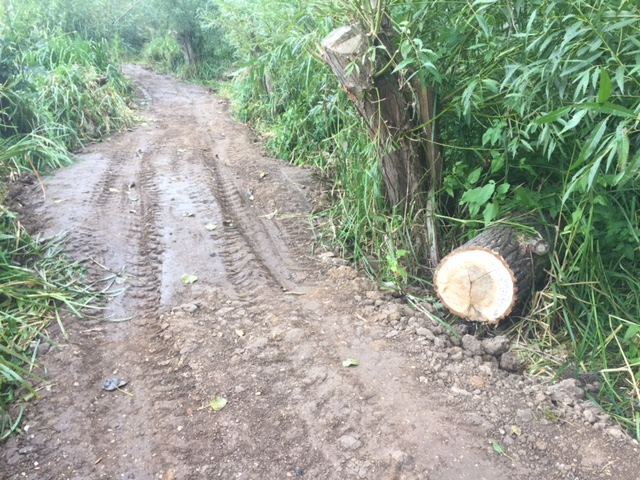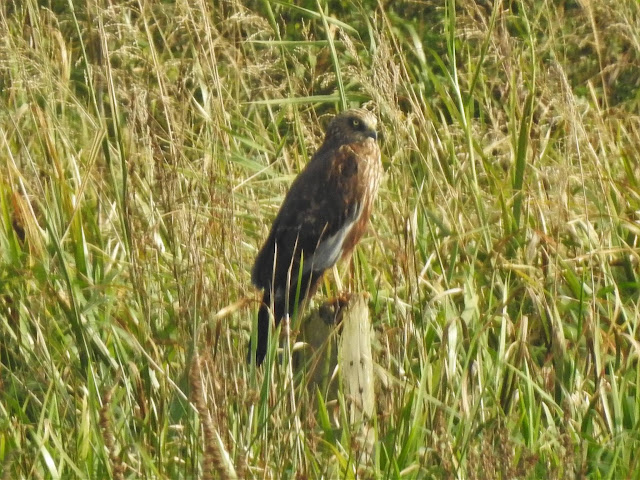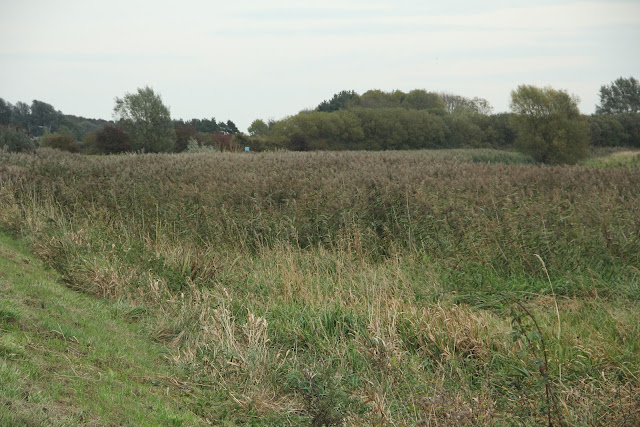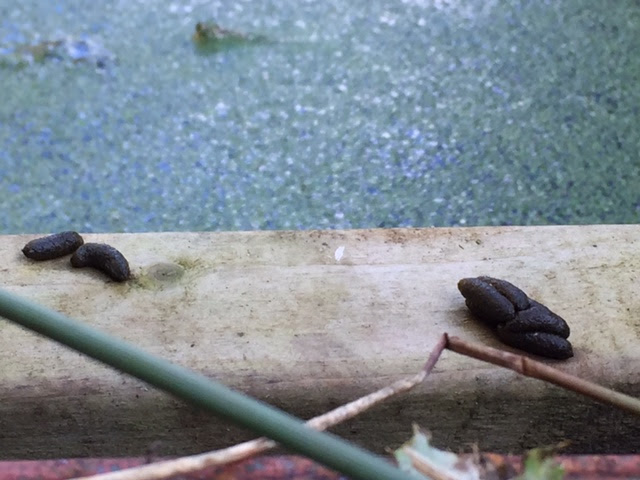We've been trying to untangle ours...
As is the way of the 21st century Warden; We've been deep into the world of fibre optic communications (multi and single mode), media converters, Cat 6 networks, baluns and wireless wildlife cameras. At least life is varied!
Obviously all this is part of the reception hide project at Tophill Low. It's a case of speak now or forever on many elements so all energies have been expended upon this since Autumn. We're pleased to say work is very nearly complete and we're delighted with the result:
All the major noise and construction is at an end and the site compound down - so back to tranquillity. That said its not quite ready for public consumption. Partly because we still need to tie up a few loose ends and finishing touches, but also because of our own pride in it. We'd sooner unveil the finished project in its complete form rather than a stilted roll out. The current timescale is;
Christmas / New Year - Building closed - rest of reserve open as normal
Early Jan - Finish works and tweaks to new pond
Late Jan - Feb - Open birders hide, 'in and out' ramps, pond edge, new picnic area and new northern walk to D woods.
Spring - Trial opening of new viewing gallery, wildlife cameras, tea counter
June 17th - 18th - Water Works for Wildlife Weekend - fee admission open weekend with building and reserve on show with assistance and displays from local conservation groups.
When ground conditions improve - southern walk to north lagoon, family walk inc swamp causeway, butterfly border and bird seed crop.
That said the very sedentary long tailed duck which has been loitering beneath the window since the 2nd of December is unlikely to still be on view by then - though was still here today on Christmas Eve (speck in centre of shot):
A little closer by Roy Lyon:
So a few more pictures of the interior. Alas not! Until we get sorted out we'd rather folk see the finished job. So its admiring from afar for the time being:
The path construction to the north lagoon may be a little more involved as now the weather has turned our works have become too soggy for the time being - so that may run to the summer:
And likewise the many different camera rigs to get working in situ - still revealing interesting behaviour on South Marsh East:
As a result it also means out with the old. Alas D reservoir car park hide is no more;
Clearly a shame in some ways as its been on the reserve 25 years or so and witness to some great birds - indeed the amur falcon was first seen from it. A close inspection revealed some interesting rot which meant it was not before time to come down. The area will be replanted with trees and returned back to nature.
So with all the complexity and work it was pleasing to go back to some straight forward practical conservation work. We've had a go at hedge laying around the reserve previously with our volunteers to better improve the structure for nesting birds and screening, but brought in professional John Hulbert to show some correct technique. I was looking forward to this as a nice simple distraction from the complexities of building work:
Certainly a great skill - in some ways fibre optic networking appears more comprehensible!
An excellent few days and good inspiring stuff for the team
In order to ready materials for the course we needed some stakes - so with help from Hull University we re-coppiced some of the sycamore in the woods.
Whilst initially seemingly destructive this will all grow back soon enough; The intention is that this is much more the future of Tophill. Having undertaken a lot of big re-landscaping and construction works in recent years we intend to move to a more passive and ongoing rotation of pollards, coppice and hedges to create the best structure for nesting birds. We've also done a limited amount of thinning and ride management in the woodlands. The intention here is to give room for the oaks and broadleaves to grow and become some real veterans in future, and also get a gradient of canopy and more light into the rides for better invertebrates, plants and birds:
We've ring barked some standing trees as these will provide great opportunities for woodpeckers in future. Many stumps we've left standing high for our willow tits. They nest in rotten stumps and whilst former Warden Peter Izzard did many which are in a perfect state of decay now - we need to ensure the nesting opportunity is still there in another few years.
Hopefully in time the developing scrub margins will be perfect for birds like lesser whitethroat (Roy Vincent)
Yes it is that long since the last posting!! The wader season more or less closed out with a final pectoral sandpiper on south marsh east rounding off the passage from the 12th to the 14th of September. That said the late selection included the last (very late and uncommon) greenshank on the 14th of December (Brian Colley),
Jack snipe on the 31 Oct, ringed plover on the 2nd November, black tailed godwit on the 16th Oct, green sandpiper on the 30th October, dunlin on the 6th. A nice comparison picture by Pat Hogarth at the tail end of the North Lagoon season - dunlin, ruff and greenshank:
A few passerines went through with wheatear on the wall
A redstart at Angram farm by Karen and 3 stonechat were a nice find on the 11th of November by Martin Hodges - as ever check out his blog for more info:
And a green woodpecker that hung around a good chunk of early autumn was a nice addition - Roy Lyon
But perhaps the best bird was this grey phalarope present from the 8th of November to the 13th - Pat Hogarth:
Perhaps most welcome for me was a smew - again present for the first time in any meaningful way since 2014 - Erich Hediger (more write up on Erich's page):
A black necked grebe was picked up on O reservoir on the 22nd of November and appears to have remained until the 19th of December - Roy Lyon:
Quickly replaced by another good bird - Great white egret at the north end of the reserve - Found and photo'd by Karen Williams:
As is typical early November saw a procession of whooper swan groups moving through the reserve - Martin:
A smattering of white fronted geese (the latest present today) - Roy Lyon
Some beans and pink feet - Roy
A pair of wintering marsh harrier have been very active over the southern marshes - not helping the teal settle particularly - Roy:
To be fair autumn always sees a reduction in kingfisher activity on the north marsh - a last few from Brian Colley
Water rail vocal around site BC:
Undoubtedly the rails will appreciate the recent work on the river Hull bank. Yorkshire Water have been working with the Trust for Conservation Volunteers over the last few months to clear willow regen from the important reedbeds on the berm of the river. A fairly mammoth task, if left they'd return back to willow carr, which although valuable to an extent smothers and excludes the important reed beds which we are hoping to expand:
A huge amount of work was undertaken - Rich clearing the last few at Wilfholme having worked top to bottom:
It doesn't seem long since the EA cleared some of the big trees out - but the speed and volume of willow that had returned was fairly mind blowing. Without the interjection of the TCV and Yorkshire Water's funding its unlikely the Tophill vols could ever have taken this task on in addition to everything else:
To prevent it returning all stumps treated off:
We hope this work helps with flood risk by preventing damage to flood defences and reduces shading of the important binding turf. It'll also negate the need to come back in with heavy machinery and all the disturbance that entails.
With a few choice willows left we hope the habitat will be better for snipe (a jack disturbed out this hollow prior to pic), reed bunting, reed warbler, cuckoo, egrets, herons, bitterns (one kicking around somewhere presently), possibly tempt those bearded tits to hang around, and marsh harriers:
Work's finishing out with pollarding the willows on the rear of South Marsh East - preventing them from collapsing and falling into the water and taking root - probably irreparably. There'll be some disturbance undoubtedly from walkers this season - but we need to grasp the opportunity to do this now whilst present.
Likewise hopefully water voles will enjoy the more luscious vegetation - still plenty of droppings about - perhaps credit to the removal of 3 mink this autumn:
As ever a lot of otter activity on North Marsh of late - Neil Murray:
Brian Colley:
A fine Noctule bat - with East Yorkshire Bat Group on their recent audit:
A rough legged buzzard was at the south of site in early autumn - but since has just been the commons about:
A fine autumn moth - convolvulus; All the info is best digested on Martin's page both for this subject and that of gulls...
Marsh Frog - still about on the 1st of December:
One less alien species on site - the terrapin is no more (on Tophill at any rate) - A final shot by Brian:
A feature of inaccessible South Lagoon for several years this autumn it was recently discovered by one of our volunteers wandering around on dry land round the O reservoir. We're not sure whether this was a foray or an annual journey to a hibernation site. Whichever the opportunity was too good to pass up and the terrapin was seized and taken into captivity and now spends its days in a comfortable retirement setting.
A few have greeted it with dismay - but in evaluation it is for the best. Terrapins are omnivorous and will basically take whatever they can seize - and this can include invertebrates, fish, amphibians, eggs and chicks. We never observed this on Tophill and the little grebes bred successfully there this year - but we don't know its full impact. Whilst it could never breed as the water temperatures are too cool for too long for incubation we equally didn't want a reputation and more being dumped and joining it - potentially causing us a bigger problem. Keeping it in captivity may seem cruel for an animal living in the wild - however it was in captivity previously and its stint in Tophill is but an interlude from which it can have fond memories. An interesting talking point - but the best outcome.
Recently disappeared too are the Belted Galloways - gone back to the barn for another winter:
Thanks as ever to Edward and Nicola Duggleby at Beswick Hall Farms for the loan of them this season.
Another departee too - Many of you will have come across one of our Volunteer Wardens Dave Ware over the last few years. Unfortunately he's relocating 'down south' (for missionary work one of the gang reckons!) - a great asset to the reserve he'll be missed and big thanks for all his help:
And so another year ends on the reserve - and a fairly momentous one. A huge thanks to everyone who's helped over the year in many ways. Hopefully we can enjoy the fruits in 2017
A final note... As ever we'll be having the annual year listing event on the 1st of January. Two walks at 10am and 1pm with the aim being to bag the most species possible on the day - generally circa 70. The walks are free with standard admission and we'll be keeping a running tally on twitter through the day. This year we'll be having an added twist (entirely optional for anyone attending or not) - a fund raiser for Ryedale Wildlife Rescue run by Jean Thorpe. Jean's been excellent to us readily accepting otters, owls and buzzards for veterinary treatment and care at various unsociable hours. If anyone wishes to sponsor us send an e-mail to the tophill pics account - we reckon on around 10p a bird...
Happy Christmas and New Year to all.





























































